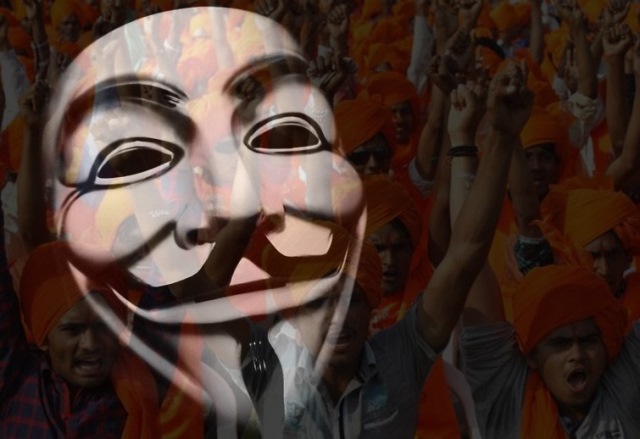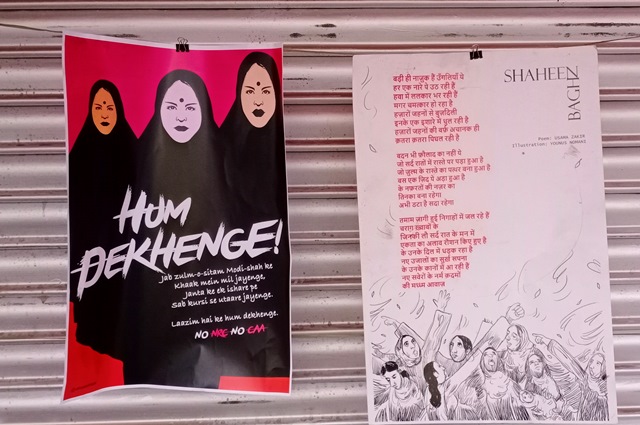As young journalists we learnt our basic lesson that when a dog bites a man it is not news, when a man bites a dog, it is. We also learnt that if a lie is told a thousand times, repeatedly and incessantly, as practiced by the Guderian Nazi propaganda machinery, it might indeed become an absolute truth. A lie becomes a truth. An organized web of lies, hence, turns into a grand bouquet of established legitimacy.
In contemporary India, this could truly be called the phenomena of post-truth of the new normal, though it might look like a theatre of the absurd at times. Or how fake news, pure propaganda, camouflaged as breaking news, or news repeated many times as partisan opinion, in a shrill, one-dimensional repeat-narrative on TV, sometimes with doctored videos, becomes the chronicle of a media prophecy foretold. Witness the demonization of JNU, its inherited intellectual, academic and progressive tradition, and the character assassination of its scholars and student leaders. (Ironically, this does not stop the huge rush of new students to the beautiful campus every new admission year.)
There is no dark irony here. This is exactly like in the Nazi times. That is the original template. It’s just that this entire mainline and fringe media apparatus, often operating as rabble-rousers, actually operate 24×7 to legitimize and reinforce the current power structure, its policies and programmes, its corporate lobbies and vested interests.
In the process, it reinforces the politics of a polarizing ideology and entrenched xenophobia, sectarian, anti-secular and hate rhetoric, and the hounding of dissenters, intellectuals, scholars, writers and journalists. So much so, the police version is most often the most sacrosanct and absolute version and status quo journalism is the only form they know and practice.
ALSO READ: JNU Will Not Crawl, Nor Bend
Witness the demonization and hounding of the Tablighis, finally proved null and void by a court. So much so, it was viciously circulated that Muslims actually spread Corona in India. Thus, a large mass of people in India can be quickly condemned as anti-nationals, urban Naxals, Maoists, Pakistani agents, and tukde-tukde gang, often even before the Indian State led by the BJP, has just about given an ambiguous signal.
This is the role the Rightwing and assorted media plays in India these days. Thereby, it unabashedly backs the State apparatus, benefits from the economic and profit linkages, is backed by the corporates who are backing the BJP openly, and thereby legitimizes the dominant discourse of the ruling regime.
This was the standard tactic used against the mothers and sisters of Shaheen Bagh not only in Jamia but all over the country before and during the nation-wide anti-NRC-CAA protests. It became integral to the repeated branding of a huge mass of unidentified people as “termites” in Northeast India and in Bengal, once again, with no evidence or documentation. Like the Jews in Europe reduced to third class citizens with no rights by the Nazis, one community was yet again targeted in India.
However, once the final data came out of the official NRC survey, it was found that lakhs of Hindus were missing too, and other indigenous communities, from the final register of Indian citizens. That put the termite theory to rest for the time being, though, let us not forget that Jews too were branded as pests, cockroaches, termites, dirty, diabolical, anti-Christ, so that the denial of citizenship, or the Holocaust, was accepted by the ‘pure races’ for ‘national purification’. This was also the American propaganda during the Vietnam War against the ‘unwashed masses and peasants’ who were fighting a protracted and victorious guerilla war against the most powerful militarized nation in the world.
In India, it all seems to be following a predictable pattern. The Rightwing media and other media propaganda outfits working openly or tacitly for the cult glorification of Narendra Modi as a messiah, prophet and demi-god, propagates the ideology of hard Hindutva (which is different from Hinduism), and thereby debunks or demonizes individuals and ideologies which are in opposition, which stand for the values of the Indian freedom struggle, or, the pluralist, secular Indian Constitution.
The Shahen Bagh movement wanted the reassertion of the Indian Constitution. Its symbols enshrined on their public platforms were icons of the freedom movement and secular India: Ambedkar, Gandhi, Maulana Azad, Sardar Patel, Subhash Chandra Bose, Khan Abdul Gaffer Khan, Sarojini Naidu, Bhagat Singh, Ashfaqullah Khan, Chandrashekhar Azad, Rabindranath Tagore, among others. However, they were constantly reduced to hate objects, implying that they are pro-Pakistan, jihadis, anti-nationals, and ‘gaddaars’, as a Union minister openly declared, asking them to be shot. This did not, however, help the BJP to win the Delhi state polls.
ALSO READ: When The Farmer Fights Back
This is the pattern they have again chosen, and abysmally failed, in handling the farmers’ protests. The sheer resilience of the farmers’ movement right now in lakhs from across several states in north and western India (and not only from Punjab and Haryana) on the various borders of Delhi, preparing for a Republic Day showdown, has debunked the BJP propaganda machinery. Even while one Union minister joined in the branding of farmers as Khalistanis, Maoists, Leftists and Urban (Turban!) Naxals, it just did not work.
The theory that the Sangh Parivar operates in multiple synthesis in a smooth orchestra like a hydra-headed octopus of a joint family, is true. Though, it sometimes gets jarring.
At one time, it was the symphony between the moderate and hard line of Atal Behari Vajpayee and LK Advani. Journalists would then claim that the Hindutva fringe is different from mainstream, political BJP — so let’s not blur the lines. However, clearly, this theory has all but collapsed in the current one-dimensional scenario with Modi as the one and only supremo commanding over the entire Hindutva machinery, and the power structure of the partisan State apparatus, with Amit Shah as his trouble-shooter, and the RSS as his ally.
So much so, the line between the fringe and mainstream in the party and Sangh Parivar has totally merged. This has been witnessed by the rise of an extreme hardliner like Yogi Adityanath, who is now being followed as a role model by ‘moderates’ like Shivraj Singh Chauhan in Madhya Pradesh.
This paradigm shift in power has been lucidly translated between the fringe and mainstream media backing Modi like an eternal and only monarch of all that he surveys. One of these portals actually calls itself liberal and right of center. Others post stories which are like regular stories in a mainline English daily. However, it is the content, or the opinion between the lines, which is often insidious and tells us who is actually biting — the man or the dog!
For instance, one of them dug out other critical tweets of the former Group Captain of the Indian Air Force flying Go Air lines, who has been suspended for calling an anonymous PM ‘an idiot’. The portal is tacitly saying, look, this man has a bad record, etc!
In a spoofy irony, these pro-BJP portals are now going full blast against what they call the ‘Big Tech’ conspiracy, especially in America. They claim that these global, big money conglomerates are basically Left flunkeys. Why – because Donald Trump has been banned by Twitter and Facebook! This is censorship, not acceptable!
Their lament is heartbreaking. Suddenly, it seems that the Hindutva media has now opened yet another front against Big Tech American Capitalism, even while Modi has been called as the best buddy of two big Gujarati capitalists in India by the protesting farmers. Trump, surely, has his Proud Boys, even in India.

